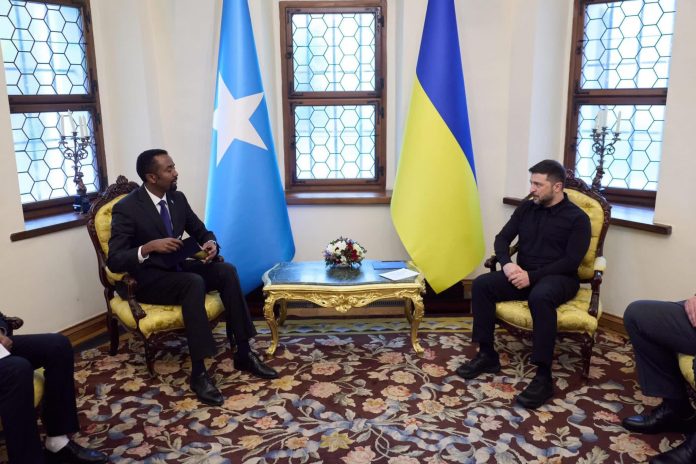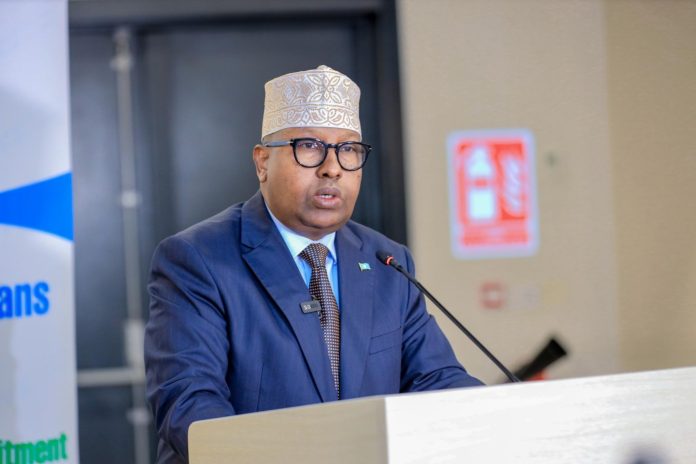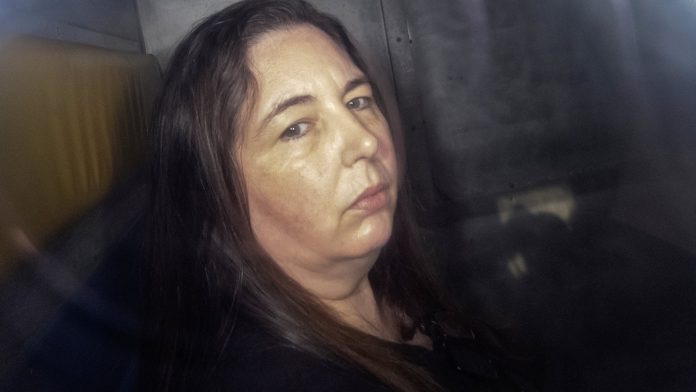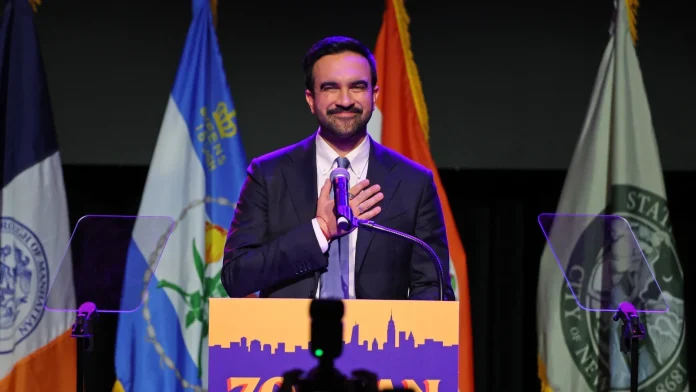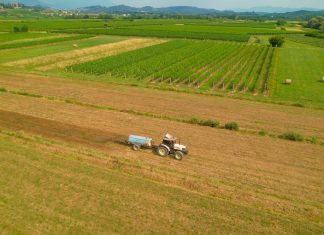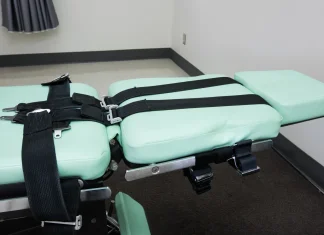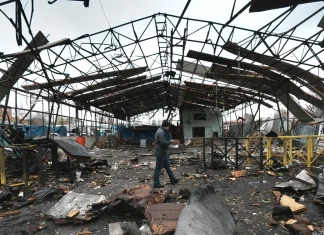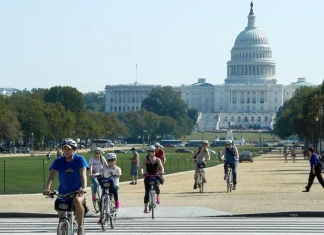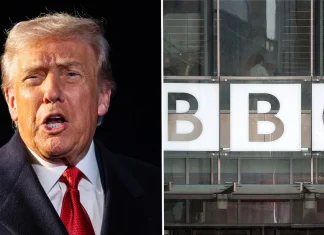Nov 06(Jowhar)-Madaxweynaha dalka Ukraine, Mudane Volodymyr Zelenskyy, ayaa ka guddoomay waraaqaha aqoonsiga Safiirka cusub ee Jamhuuriyadda Federaalka Soomaaliya ee dalka Ukraine, oo xaruntiisu tahay magaalada Belgrade-Serbia, Mudane Danjire Maxamed Cabdullaahi Axmed.
US Supreme Court Questions Legality of Trump-Era Tariffs in Review
The Courtroom Clash Over Tariffs: A Moment That Could Rechart Global Trade
It was the kind of courtroom drama that has the whole world leaning forward. Inside the marble hush of the US Supreme Court, justices from across the ideological spectrum pressed, prodded and pushed at a question that could reframe presidential power: can a president, under a Cold War–era emergency law, impose sweeping tariffs that last indefinitely and touch virtually every trading partner?
On the surface it was legalese — the International Emergency Economic Powers Act (IEEPA) of 1977, the “major questions” doctrine, the Tariff Act of 1930 — but beneath that lay livelihoods, supply chains, and diplomatic tinder. The stakes are enormous. The administration’s lawyers argued the tariffs were necessary to stave off an economic and national security crisis; opponents warned of runaway executive authority and the economic pain tariffs can inflict on ordinary consumers and businesses.
Inside the Chamber
For more than two-and-a-half hours, the justices drilled into the heart of the dispute, a spectacle both procedural and profoundly political. Conservative and liberal justices alike asked sharp, at-times skeptical questions of the government’s solicitor general about whether using IEEPA to slap tariffs on nearly every trade partner was a stretch — or a constitutional overreach.
“The Constitution grants Congress the power to impose taxes and tariffs,” Chief Justice John Roberts reminded the courtroom. “Hasn’t that always been the core role of the legislature?”
Justice Amy Coney Barrett pushed on language: has the phrase “regulate importation” ever been read to mean imposing tariffs? Barrett’s line of questioning cut to the heart of the administration’s legal theory: that a statute meant for emergencies could be repurposed to rewrite trade policy wholesale.
And yet, even some conservative justices signaled discomfort in tightly constraining the president’s room to maneuver in foreign affairs. “There’s an inherent executive power when dealing with foreign nations,” one justice mused. “How do we reconcile that with Congress’ authority?”
Arguments, Counterarguments, and a Doctrine That Matters
The government’s solicitor general argued that the president found the nation teetering on economic and national-security catastrophe because of chronic trade deficits. “The tariffs weren’t a hobby,” he said in measured tones, “they were a deliberate emergency tool to protect American economic resilience and national security.” He warned that overturning the tariffs could invite “ruthless trade retaliation” and severe consequences.
Opponents — a coalition of businesses and a dozen states led largely by Democratic attorneys general — pushed back hard. Their lawyers said that changing the balance of power between Congress and the White House cannot be accomplished through a vague reading of a decades-old emergency statute. “If the executive can deploy IEEPA this way,” one opposing attorney told the justices, “we cede to the president the power to rewrite tax and tariff policy without legislative consent.”
Underlying the sparring was the Supreme Court’s “major questions” doctrine — a principle that actions of vast political or economic significance should be explicitly authorized by Congress. When the implications run into the trillions over a decade, as some estimates suggest these tariffs could, the doctrine becomes a judicial fulcrum.
On the Ground: People, Businesses, Ports
To understand what’s at risk, step outside the courthouse and across the country.
In Portland, Oregon — one of the states challenging the tariffs — a small metal fabrication shop hums with riveters and welders. “We rely on parts from Japan and South Korea,” says Maria Alvarez, the owner, wiping oil from her hands. “When steel or electronics get taxed, our bills go up. I can’t just pass that all on to customers.” For Ms. Alvarez, the case is not abstract: it’s about whether her workforce keeps its hours next quarter.
On the docks of Long Beach, cold mist lifts off stacked containers as ship crews and longshoremen move pallets in practiced choreography. A trucker, who asked not to be named, shrugged: “Tariffs add time and paperwork. It trickles down. You feel it at the pump, at the shop, at the grocery.” Around the world, exporters and importers are watching the Court for clarity — or for the lack of it.
At a farm co-op in Iowa, a local director said tariffs have been a double-edged sword. “Sometimes we get better deals on one front,” he said, “but retaliatory tariffs can wipe out markets overnight. Small producers can’t absorb that shock.” For many communities, the question isn’t just constitutional theory; it’s whether their next harvest can find customers overseas.
Lawyers, Judges and the Echoes of 1930
Some justices floated alternative legal avenues the administration might pursue. Justice Samuel Alito asked about Section 338 of the Tariff Act of 1930 — a lesser-known statutory tool that could, in theory, provide another legal grounding for tariffs. The solicitor general acknowledged the government had other authorities in its toolkit, a point underscored by Treasury officials who suggested that even if IEEPA were closed off, the administration could pivot.
That potential pivot is precisely what alarms critics. “Today it’s tariffs; tomorrow it could be any major economic lever,” said an academic who has studied executive power. “The Court’s decision could either rein in a sweeping use of emergency authority or give a green light to a new model of unilateral economic governance.”
Why This Matters Globally
Tariffs are not just domestic policy; they are diplomatic instruments and economic signals. When the United States — the world’s largest economy — shifts how it imposes trade barriers, markets shift, supply chains reroute, and governments recalibrate their own policies.
Consider China, Canada and Mexico — countries specifically targeted in some of the administration’s measures. Each has its own political calculus and economic exposure. A judgement that preserves broad executive tariff power could embolden future presidents to use trade policy as a first resort rather than a negotiated outcome.
And there’s the intangible: trust. “Stable rules matter to global commerce,” said a veteran trade negotiator. “Companies plan investment decades in advance. If the rules can be changed by a single executive decree, that predictability frays.”
Possible Outcomes and What Comes Next
- If the Court sides with the administration, the president’s tariffs might survive, and the precedent could expand executive authority in trade — albeit with continuing legal and political pushback.
- If the Court restricts the use of IEEPA for tariffs, the administration may pursue other statutes, and Congress could be forced into the uncomfortable role of legislating in an area long ceded to the executive.
- Either way, the decision will ripple through markets, legislatures and diplomatic halls for years to come.
What Are We Willing to Entrust to One Branch?
As the justices weigh text and intent, emergency powers and constitutional allocations, they’re also answering a deeper question about the balance of our democracy: where should final say rest on matters that touch millions of lives daily — from the price of electronics to the stability of small-town factories?
So ask yourself: do you want trade policy to be forged on the floor of Congress, with all its compromises and noise, or increasingly in the quieter — but sometimes swifter — chambers of executive authority?
Whatever the Court decides, this case is more than legal doctrine. It’s about how a country governs itself in a tense global economy, and whether tools born of emergency will become standard instruments of statecraft. For workers on an assembly line, a farmer checking commodity prices, and an export manager negotiating shipment terms, the answer will be felt in their paychecks and in markets that span the globe.
And when the decision finally comes, it will leave a footprint not only in black-letter law but on the everyday rhythms of international commerce — a reminder that constitutional questions often have very human consequences.
Wasiir Fiqi oo qiray in diyaarado ka duula Puntland ay wax geeyaan Suudaan
Nov 06(Jowhar)-Dawladda Soomaaliya ayaa maantay qirtay in diyaaradda ka duulaa Magaalada Boosaaso ay wax geeyaan Chad , Niger iyo Galbeedka Suudaan.
Death toll tops 100 after typhoon devastates Philippines
When Rivers Took the Streets: Cebu’s Wake-Up Call After Typhoon Kalmaegi
There are mornings you remember forever—weddings, births, exams—and then there is the morning after a river decides to run where people walk. In Cebu, the day after Typhoon Kalmaegi, neighborhoods that usually hum with jeepneys and sari-sari stores looked as if a giant hand had sifted through them and left only the debris: twisted corrugated roofs, uprooted trees, and the hulking hulls of shipping containers stranded like beached whales on asphalt.
“The water was so strong that you couldn’t even step outside,” a footwear merchant in Liloan told me, eyes still ringed with the grime of cleanup. “At about four in the morning it just came—raging—and in minutes my shop was gone.”
Human Toll: Names, Numbers, and the Missing
As dawn broke across the province, rescue teams began to tally an incomprehensible ledger. The official count has climbed above 100 fatalities nationwide, with Cebu province accounting for the majority. Provincial spokesman Rhon Ramos said 35 bodies had been recovered from Liloan—one town in the greater Cebu City area—bringing Cebu’s confirmed deaths to 76. The national civil defence deputy administrator Rafaelito Alejandro reported at least 17 more fatalities in other provinces, and said roughly 26 people remained missing in the archipelago.
Rescuers worked from rooftops, in boats and on overturned vehicles. The Philippine military, already stretched thin from pre-positioned relief missions, suffered a harrowing loss when a Super Huey helicopter crashed while en route to deliver aid to northern Mindanao’s Butuan. Eastern Mindanao Command later confirmed that the remains of six personnel—two pilots and four crew members—had been recovered, and air force spokeswoman Colonel Maria Christina Basco said authorities were awaiting forensic confirmation of their identities.
Evacuations, Shelter, and the Logistics of Survival
Before the storm made landfall, nearly 400,000 people were moved from vulnerable towns and island barangays—an enormous, preemptive mobilization that likely saved lives even as homes and livelihoods were swept away. Yet evacuation is only the first step. In temporary shelters, families huddled on thin mats, children in wet clothes, elders clutching medications that may not have survived the deluge.
“We had to leave with whatever we could carry—some cooked rice, my granddaughter, a blanket,” recalled a Barangay captain in a shelter near Cebu City. “But what do you do when your house is underwater and your papers are gone?”
Scenes from the Ground: Anecdotes and Local Color
Walk past the tarps and relief packs and you can still hear Cebu: the rhythmic clack of bingo markers in the local community hall repurposed for queue numbers; the smell of sinangag (garlic fried rice) being heated on a camp stove for those who had nothing else; children turning puddles into makeshift playpens, tugging at the hems of rescuers’ uniforms.
In one barangay, an elderly man held a battered photo of his family and said, “We planted mango trees when my children were small. The trees were our hope. Now everything is brown.” The simplicity of such losses—trees, photos, a grandfather’s walking stick—reveals an often-underreported dimension of disasters: memory and place, washed away.
Infrastructure and the Extraordinary Strength of Water
Kalmaegi’s fury was less about wind and more about water. In the 24 hours before landfall, areas around Cebu City recorded 183 mm of rain—far beyond the monthly average of 131 mm, weather specialist Charmagne Varilla told local reporters. Streets turned to rivers that swept away cars, riverside shanties, and even massive shipping containers, which were carried like toys to improbable resting places.
“We were expecting the winds to be the dangerous part, but… the water is what’s truly putting our people at risk,” provincial governor Pamela Baricuatro said bluntly as she toured the worst-hit neighborhoods. “The floodwaters are just devastating.”
Why Storms Like Kalmaegi Feel Stronger
Scientists have been sounding the alarm for years: a warmer world makes for hungrier storms. Warmer sea surface temperatures feed typhoons, allowing them to intensify faster, while a warmer atmosphere can hold more moisture—roughly 7% more per 1°C of warming—leading to heavier downpours.
“When you overlay rapid urbanisation on top of a changing climate, you get more people living in harm’s way,” explained a climate scientist based in Manila. “Many coastal communities are built in floodplains; drainage systems are outdated; and informal settlements lack resilient construction. All of that turns intense rain into catastrophic flooding.”
The Philippines, an archipelago battered by an average of 20 storms each year, had already reached that yearly norm with Kalmaegi, Charmagne Varilla warned. She added there could be “three to five” more storms before the end of December, underscoring a brutal calendar for disaster responders.
Immediate Needs and the Long Road to Recovery
In the first 72 hours, priorities are straightforward: search and rescue, medical aid, clean water, and restoring communications. Beyond that, the challenges multiply—sanitation to prevent disease outbreaks, rebuilding homes and livelihoods, and helping children get back to school.
- Search and rescue: teams continue to comb flooded neighborhoods for the missing.
- Relief supplies: rice, bottled water, blankets, and medicines are urgently needed.
- Infrastructure repair: roads, bridges and electricity distribution lines must be restored for recovery to begin.
A relief coordinator working with a local NGO said, “People are exhausted, but they’re also organizing themselves. Mothers form cooking groups. Fishermen use their boats to ferry elderly people. There’s despair—but also a fierce practicality.”
What This Means Globally
Kalmaegi is local, but it is also a story with global echoes. Cities from Lagos to Jakarta to New Orleans have experienced how urban planning gaps and poverty can turn ordinary storms into disasters. It raises uncomfortable questions: How do we build cities that absorb water rather than reject it? Who pays for resilient infrastructure in places already stretched thin by economic hardship?
And as we debate solutions—mangrove restoration, upgraded drainage, early warning systems, insurance schemes for the poor—there is another question for you, the reader: what kind of world do we want to leave for the next generation? One where communities can recover within weeks, or one where each season brings another reckoning?
Looking Ahead
For now, the headlines will move on. Aid convoys will arrive and leave; the counting of roofs fixed and trees replanted will begin. But in Cebu and across the islands, people will keep living with the memory of water in their rooms, under their beds, through their kitchens. The work of rebuilding is not just physical—it is architectural, bureaucratic, and moral.
“We will rebuild,” the footwear merchant told me as she wrapped her soaked sandals in plastic. “It will take time, but we are used to storms. We are not used to this much water—but we will stand up.”
Months from now, when the rains come again, will we be better prepared? The answer will depend on policy, funding, and politics—but most of all on whether we listen now to the people who stood in the flood and lived to tell the tale.
UN COP30 looks to boost sluggish global progress on climate targets

Belém at the Brink: A City, an Amazon, and a World Watching
When you step off the riverboat in Belém, the air smells of hot tar, roasted açaí and diesel. Motorboats crisscross the brown veins of the Guamá River while street vendors shout over the drone of traffic. The city feels alive in the way border towns are alive — a liminal place where forest and ocean, city and jungle, meet and argue with each other.
Here, on the edge of the world’s largest rainforest, the stakes of the coming climate talks are not abstract figures or distant timelines. They are the tangled mangroves, the market stalls piled with fish, the elders who remember seasons that no longer arrive on time. In two weeks, diplomats from nearly 200 nations will gather in Belém for COP30, and the eyes of an anxious planet will be watching.
Ten Years After Paris: Progress That Feels Both Real and Fragile
Ten years ago, in 2015, the Paris Agreement rallied almost every nation to a single ambition: keep global warming as close as possible to 1.5°C above pre-industrial levels. Back then, scientists warned a business-as-usual path could land us nearer to 4°C by century’s end — a world of cataclysms.
There has been movement since. If all the climate pledges governments have on paper today are carried out, projections now put end-of-century warming around 2.8°C rather than 4°C. That narrowing of the gap is a tribute to pressure applied at successive COPs, to grassroots activists, and to the slow conversion of markets and politics toward cleaner energy.
Yet “progress” does not mean safety. At the current pace of warming, many scientists warn, the 1.5°C threshold could be temporarily exceeded as soon as 2030, and the 2°C mark could be breached around mid-century. The world has warmed by roughly 0.27°C per decade in recent decades, and 2023 was recorded as the hottest year on instrument record.
Numbers That Bite
Consider the concrete signals: last year’s global coral bleaching event affected the vast majority of reef area; Greenland and Antarctica have shed ice to record lows; and average global sea level has risen by roughly 22–23 cm since 1901 — with about one-fifth of that increase occurring in the past decade alone.
The economic tab is mounting, too. Estimates put climate-related damages since 2000 well into the trillions of dollars, reflecting storm losses, lost harvests, destroyed infrastructure and the slow-motion catastrophe of rising seas. And the suffering is not evenly distributed: the countries least responsible for greenhouse gas emissions are the ones most exposed and least able to cope.
COP30 in Belém: What’s at Stake
Belém’s selection as host is symbolic: the Amazon is not just a backdrop for climate science — it is a keystone. Its forests lock away carbon, feed livelihoods, and anchor biodiversity. But like many other crucial ecosystems, it is under siege. The choice of Belém turns the climate conversation into a literal neighborhood dispute: who will pay for protection, how will Indigenous rights be respected, and can promises finally become action?
“This COP is more than negotiation,” says Dr. Cara Augustenborg, head of Environment Policy at University College Dublin. “It will test whether an already strained multilateral system can still prioritize climate in a world distracted by conflict and fragmentation. We are running out of time — and that means implementation, not more declarations, must be the headline.”
Geopolitics complicates the scene. Global crises — from war in Europe to conflict in the Middle East and polarizing domestic politics in major emitters — threaten to sap attention and resources away from climate action. Still, many attendees hope COP30 will shift from ambition-setting to the grittier task of delivering what’s already been promised.
Voices on the Ground
At Ver-o-Peso market, where sun-dried fish hang like flags, Maria Santos, 46, speaks softly about the changes she has seen.
“The rainy season used to come like clockwork,” she says. “Now it comes late and then it floods everything. My children ask why the rivers are higher. We are not part of the big talks, but we feel the results.”
Across town, João Lima, a boatman who ferries people across the bay, points to the thinning mangrove roots. “When the tides are higher, my customers are fewer. We are adjusting day by day. But adjustments only go so far — when the forest goes, the fish go, and our songs change.”
Justice, Finance, and the Fossil Fuel Question
Equity looms large at COP30. Many climate-vulnerable nations and justice advocates insist that those with the deepest historical responsibility must do more than offer words. They demand finance for adaptation, swift phase-outs of fossil fuels, and no new investments in infrastructure that lock the globe into further emissions.
“We need a clear plan to stop new fossil fuel projects,” says Sinéad Loughran, Climate Justice and Advocacy Adviser at Trócaire. “It is unacceptable for wealthy blocs to sidestep their responsibilities while expecting vulnerable countries to shoulder losses. Credibility at COP30 will be measured by who commits to real, fair, and immediate action.”
For smaller nations, funding is the Achilles’ heel. Adaptation measures — sea walls, resilient crops, early-warning systems — cost money, and a string of pledges from richer countries have often been slow or short of need. This session in Belém will test whether finance can finally match rhetoric.
Europe’s Role — and Ireland’s Moment
European delegations will push for implementation-forward outcomes, and Ireland arrives with a particular eye on continuity: it is set to hold the EU presidency for six months starting next July. Minister for Climate Darragh O’Brien, expected to watch negotiations closely, says Ireland’s story — falling emissions, a growing share of renewable electricity — shows what’s possible.
“We’ve reduced our greenhouse gases over the last three years and hit about 40% renewable electricity last year,” he told reporters. “But reduction is only the beginning. We must bring communities with us, and we must make sure our commitments reflect fairness and urgency.”
How to Read This Moment
COP30 is a crossroads. On one path lies incrementalism: more targets, more reviews, and slow progress that may be too little, too late. On the other lies a tougher route — rapid coalitions to finance adaptation, enforceable fossil fuel phase-outs, and mechanisms that hold nations to account.
Which path will the delegates choose? That depends on leaders and lobbyists, yes, but also on civic pressure and the stories that shape public imagination. Will Belém be the place where a city’s market cry meets global ambition and forces a translation from promise to practice?
Think about the last storm you remember. Who paid to fix the damage? Who was able to come back to normal, and who was not? Our answers tell us something about climate politics: this is not just a technical negotiation. It is a moral reckoning about fairness, survival and solidarity.
After the Talks
Regardless of what comes out of Belém, the next decade will be a test of implementation. Civil society, scientists and local communities will be watching the timber, the tides and the markets for signs that global promises are being married to local realities.
For Maria and João, for the Indigenous leaders who trace their ancestry through the forest, and for billions around the world living on climate’s frontline, rhetoric will ring hollow unless it converts to action on the ground. COP30 could be a turning point — or another delay.
Which will it be? As you read this, ask yourself: what role can you play in tipping the choice toward justice and urgency? The future will be made in places like Belém — where the river meets the rainforest and decisions ripple into everyone’s life.
Australian murderer claims wrongful conviction, calls for judicial review
A provincial town, a poisoned roast, and a justice system grappling for answers
It began, by all accounts, as an ordinary Sunday lunch in a tidy house in Leongatha: the sort of family gathering that threads through Australian country towns, where food, ritual and gossip are as important as the weather. By the time the plates were cleared, three people were dead, another grievously ill, and a community that prides itself on openness and neighbourliness found itself holding its breath.
The cook was Erin Patterson, 51. The dish was beef Wellington — a decadent, celebratory centrepiece — and, according to prosecutors, it had been laced with death cap mushrooms, the most lethal fungi in the world. In July, a jury in Victoria convicted Patterson of murdering three of her estranged husband’s relatives and attempting to murder a fourth. In September she was sentenced to life behind bars, with a non-parole period set at 33 years.
But the story is not yet finished. Court papers lodged this week reveal that Patterson’s legal team has taken the first step on what could become a long, fractious appeal process. They allege multiple “substantial miscarriages of justice,” pointing to procedural irregularities, contested evidence and what they call an “oppressive” cross-examination that, they say, contaminated the trial.
Appeal lodged, but not yet accepted
Legal filings shared with the public — and discussed in media reports across Australia — confirm that the appeal has been lodged with Victoria’s Court of Appeal. The court, however, clarified that while documents have been filed, the appeal itself has not yet been formally accepted for hearing. That procedural limbo is familiar to anyone who watches criminal cases unfold: paperwork filed is not the same as a case ready to be argued, and the path from lodgement to a full oral hearing can be slow and unpredictable.
According to the grounds of appeal, Patterson’s lawyers argue that while the jury was sequestered during part of the trial a “fundamental irregularity” occurred that “fatally undermined the integrity of the verdicts.” The filing offers no further detail in the version released publicly, but the phrase is legal shorthand for an event or influence substantial enough to cast doubt on whether the jury’s decision was fair and impartial.
Her counsel also accuse the prosecution of subjecting Patterson to an unfair, even oppressive, cross-examination. They argue that the trial judge erred in allowing certain evidence while excluding other material that could have exculpated her. And in an unusual move, Patterson has requested that, if an oral hearing proceeds, she not be required to attend in person.
What’s at stake — beyond one sentence
At the heart of this appeal are risks and questions that run far wider than a single sentence. The prosecution has also appealed the judge’s sentence, calling the life term with parole eligibility after 33 years “manifestly inadequate.” That counter-appeal signals prosecutors want either a longer minimum term or different framing of the punishment, arguing the gravity of the crime demands more.
For the families of Don and Gail Patterson and Heather Wilkinson — the three people who died — these legal manoeuvres reopen wounds and prolong the public retelling of a tragedy. For Erin Patterson, they are a bid to have a jury’s verdict overturned. For the wider community of Leongatha, they are a reminder that the legal process can stretch on for years, even after a dramatic trial convicts someone of the worst offences.
What the science says about the mushrooms
Where the meat of the controversy intersects with science is the role of Amanita phalloides — the death cap. Toxicologists note that death caps produce amatoxins, a class of poisons that attack the liver and can be fatal even in small doses. Globally, amatoxin-containing mushrooms account for the majority of fatal mushroom poisonings.
In southern Australia, including parts of Victoria, death caps are an invasive species. They have been linked to several poisoning incidents over the past decades, though fatal cases remain comparatively rare thanks to modern medical care. Still, once symptoms begin — nausea, vomiting, abdominal pain — liver failure can follow within days if treatment is not rapid and aggressive.
“From a toxicology perspective, death cap poisoning is distinctive and devastating,” said Dr. Lila Menon, a Melbourne-based toxicologist. “But linking a particular meal to intentional poisoning beyond reasonable doubt requires careful forensic work — trace evidence, toxin levels, timeline, witness statements. It’s rarely as simple as finding a mushroom in a dish.”
- Death cap (Amanita phalloides): responsible for most fatal mushroom poisonings worldwide.
- Time to symptoms: typically 6–24 hours post ingestion; liver failure can follow in days.
- Geography: established in parts of southern Australia, often near European-style trees such as oaks.
Leongatha’s quiet shock
Leongatha is a Gippsland town known for dairy farms, morning markets and long, flat roads that lead toward the Bass Coast. Neighbours here talk in practical terms: who’s milking at dawn, which kid scored a goal at the weekend junior footy. A trial like this ruptures that rhythm.
“We’re still the same town, but everything’s got that undercurrent now,” said Marie Jensen, who runs the café on the main street. “People whisper when they see each other. It’s as if our kitchen table has become a courtroom.”
Others worry about the reputational fallout. “Leongatha’s always been a place where families gather, and food is how we say we love one another,” said Tom Harris, a farmer who’s lived here four generations. “Now it’s hard to cook for the in-laws without thinking of what happened.”
Justice, doubt, and the public imagination
Cases like this sit at the confluence of several contemporary anxieties: the fragility of trust within families, the limits of forensic certainty, and how quickly a small town can be renamed in headlines. They also raise procedural questions: how do courts police jury integrity when sequestration is necessary, and what protections are appropriate during cross-examination of vulnerable defendants?
“The legal system has mechanisms to correct mistakes — appeals are one of them,” observed barrister Emily Ko, who specialises in criminal appeals. “But an appeal is not a retrial. It’s a judicial review of the trial’s fairness. The bar for showing a miscarriage of justice is high, and rightly so. Yet, when the allegations concern jury contamination or exclusion of critical evidence, courts take them seriously.”
So where does that leave the reader, sitting perhaps thousands of kilometres away, reading about a town that used to be quiet and is now part of a legal drama? It is tempting to rush to moral judgment — to ask what someone accused could have been thinking, or to cast the jury as the final arbiter of truth. But the slow grind of appeals is a reminder that justice, like good medicine, takes time and often resists tidy closure.
Questions to carry home
What does fairness look like when a community is grieving and the law must move coldly through procedure? How should courts handle the fog of competing narratives when science is uncertain and memories are imperfect? And finally: how do we balance the urgency of victims’ families for finality with the defendant’s right to challenge every facet of a conviction?
These are not rhetorical stances to be decided in a comment thread. They are the weighty concerns that will guide the Court of Appeal in the months ahead, and they touch on core questions about evidence, power and the meaning of justice in a small town where everyone knew the families at the centre of this tragedy.
As the legal process inches forward, Leongatha will continue to turn its pages — school sports, market mornings, the line at the bakery — but each meal shared from now on will be seasoned with a new kind of caution. How would you feel, and what would you demand, if you were at the table? The appeal will not only determine a sentence; it will test how a community and a legal system reckon with doubt.
EU nations strike deal on 2040 climate emissions target
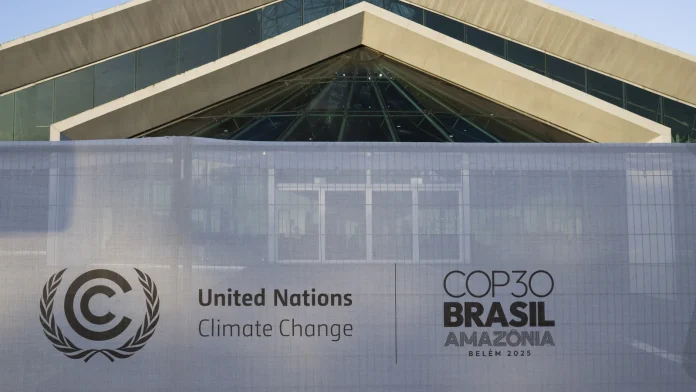
Night Owls and Negotiators: How Brussels Stayed Up to Rewrite Europe’s Climate Promise
In the pale hours of a damp Brussels morning, a knot of exhausted delegates shuffled out of a conference room, clutching thermoses and thin croissants like survival gear. Outside, the city’s trams rattled past the ornate façades of the EU quarter; inside, ministers and officials had just put their names to a new climate roadmap that will accompany the bloc to the world stage in Brazil.
The headline is simple and seismic: the European Union has settled on a goal to cut greenhouse gas emissions by 90% by 2040 compared with 1990 levels. It’s a figure that reads like ambition on paper, but the path to that number—and the compromises threaded through it—are where the story lives.
What Was Agreed—and What It Really Means
Under the deal, member states committed to a 2040 target of minus 90% relative to 1990. They also set an interim range for 2035 emissions reductions between roughly 66% and 72.5%. The commitments will be folded into the EU’s Nationally Determined Contribution (NDC) under the Paris Agreement and presented at COP30 this week in Brazil.
Certain policy design choices matter as much as the raw percentages. The package contains a modest but politically charged flexibility: EU countries can account for up to 5% of their obligations through international credits—offsets bought from outside the bloc. That system will formally start in 2036, with a pilot phase between 2031 and 2035. Meanwhile, the long-planned extension of the EU Emissions Trading System to buildings and transport—dubbed ETS2—was pushed back a year from its originally scheduled start.
And woven through the text is a “review clause”: every two years the European Commission will reassess conditions—energy prices, the actual performance of carbon sinks like forests and soils, economic competitiveness, and the maturation of technologies such as hydrogen, carbon capture and direct air capture—and could relax or tighten how much international crediting member states may use.
Voices in the Room (and Beyond)
“We came here to send a signal that Europe remains serious about reducing its footprint,” said a seasoned EU environment official who asked not to be named. “That signal is now clear—but so are the guardrails that keep some capitals comfortable.”
A Brussels-based climate policy analyst, Dr. Lena Kovács from a European university, described the pact as “a classic political compromise.” “Ninety percent is an ambitious headline,” she said. “But the 5% outsourcing option and the two-year review clause mean the effective domestic cuts could be quite a bit smaller depending on how member states use flexibility.”
On the other side of the table, a representative from a coalition of central and eastern member states framed the deal as pragmatic. “We raised legitimate concerns about energy prices, industrial jobs and rural livelihoods,” said a diplomat from the region. “A one-size-fits-all timetable could have left communities exposed.”
Outside the negotiating rooms, activists and ordinary citizens voiced mixed feelings. “If you let people buy their way out, you haven’t set a proper target,” said Amara, a climate activist from Lisbon who camped near the conference centre. Nearby, Henri, a Brussels baker who rose at 3 a.m. to deliver warm baguettes to delegates, shrugged: “I want clean air for my kids, but I’m scared of paying more for heat. That’s what everyone here is thinking.”
Why NGOs Are Alarmed
Environmental groups reacted sharply. A senior campaigner at a major NGO warned that offsets are a familiar loophole: “Offsets can be real solutions, but too often they become a licence to delay domestic action,” she said. “If countries rely on carbon credits from abroad, the headline 90% becomes a paper promise.”
Independent analysts note that the EU has already reduced emissions significantly since 1990—roughly by a third in the decades up to 2020—thanks to cleaner power generation, efficiency measures, and industrial shifts. Yet the steepness of the path ahead requires domestic measures: electrification of transport, massive retrofits for buildings, clean industrial processes, and land-use changes to improve carbon sinks.
Industry, Farmers and the People on the Ground
Not everyone opposes flexibility. “Hard deadlines without tools would have been catastrophic for regions still dependent on gas or heavy manufacturing,” said an energy industry spokesperson. “We need time and realistic pathways to transition without social collapse.”
Farmers in parts of Europe pressed another dimension into the debate. “Our soils and forests do absorb carbon, but it’s not a blank cheque,” said Marta, who tends a mixed smallholding in eastern Poland. “The seasonal swings, beetle infestations, and droughts mean sinks are fragile. Counting on them too heavily is risky.”
Policy Mechanics and the Global Context
Why does the 5% international credit matter? In essence, it allows some portion of a country’s emission reduction obligation to be met by supporting reductions elsewhere—often in non-EU countries—through mechanisms that can range from reforestation projects to industrial abatement. Pilots and rigorous standards are supposed to ensure integrity, but history shows verification is hard and controversial.
The biannual review clause further adds uncertainty. If energy prices spike or carbon sinks underperform, the Commission could permit greater reliance on credits. If clean technologies rapidly scale—and become cost-effective—states might be pushed to do more at home. The result: a target that will be continually reframed by politics and economics.
For climate diplomats assembling in Brazil, the EU’s 2040 promise is both a card to play and a conversation starter. Delegates in Belém will watch not just the number, but the legal text that shapes real-world action.
What Lies Ahead—and Why You Should Care
There is a moral and strategic question at the heart of this deal: does leadership mean setting the loftiest headline target, or does it mean crafting a politically viable package that stands a chance of implementation across 27 diverse states?
Ten years ago, targets like these would have been unthinkable. Today they are necessary. But the means of getting there—markets, credits, sink accounting, technology bets—will determine whether the EU’s diplomacy at COP30 is heralded as ambition or critiqued as window dressing.
So where does that leave ordinary people? In the next decade you may notice more solar panels on rooftops, stricter building insulation rules, higher taxes or incentives for electric cars, and new rules for city transport. You may also witness a slow unraveling of some industrial patterns and the rise of new green jobs—but also transitional pain for households and communities that need support.
Questions to Keep in Mind
- Should climate targets be judged by their headline percentage or by the policies that make them real?
- Can international carbon markets be designed to be fair, transparent and robust enough to support real emissions reductions?
- Who wins and who loses in the transition—and how can governments make the transition just?
As Brussels’s negotiators caught short naps and boarded planes, the deal they struck will now face scrutiny in capitals and at COP30. The scene was small—fluorescent lights, tired eyes, half-drunk coffee—but the consequences are global. Will this be the moment Europe moves decisively toward a cleaner, safer future? Or will the compromises of one long night ripple into decades of delayed action? The answer will unfold in policy papers, municipal budgets, and the daily lives of people everywhere.
Listen to the debates. Ask your leaders how they’ll turn percentages into practice. And when you next walk past a park, a factory, or a rooftop solar array, remember: climate policy is not just a summit agreement. It’s the choreography of ordinary life reshaped for a hotter world.
Japan dispatches military to trap bears after series of attacks
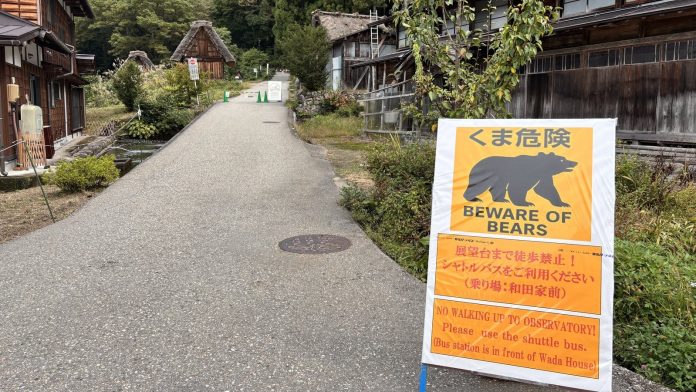
When the Mountains Walk Down to the Town: Japan’s Bear Crisis Brings Soldiers, Hunters and Hard Choices
The truck rolled up the narrow mountain road like an answer to a prayer and a provocation at once — soldiers in white helmets, jeeps full of gear, a large map unfurled on the bonnet, and steel-barred traps stacked like iron ribs. This was Kazuno, a town best known for steaming onsens, crisp apples and cedar forests, suddenly at the center of a human–animal standoff that has locals asking: who protects us when the wild comes knocking?
Since spring, northern Japan has seen an extraordinary surge of bears into towns and villages. The Ministry of the Environment reports more than 100 bear attacks since April, a grim tally that includes a record 12 deaths. In Akita prefecture alone — the mountains, hot springs and apple orchards of which cradle Kazuno — sightings have leapt roughly sixfold this year to over 8,000 reported encounters. For many residents, a hiker’s cautionary tale has become everyday life.
Temporary allies in camouflage
The Self-Defense Forces’ presence is jarring in a place where locals are used to tranquility. Soldiers are not hunting; they are logistical muscle. Their orders: transport, set and inspect heavy steel traps. Trained hunters will later check the cages and, when necessary, perform lethal dispatches. The deployment — slated through late November — follows an emergency request from Akita’s governor after weeks of mounting incidents and growing fear.
“Even if just temporary, the SDF’s help is a big relief,” said one municipal official who has overseen the town’s bear response efforts. “People here are exhausted. They can’t sleep properly anymore, wondering if a bear will be rooting around their home at dawn.”
At a roadside briefing, forestry staff showed soldiers how to assemble trap frames and lift them into trucks. The troops carried bear spray and long wooden poles shaped like drill rifles; locals stood nearby with radios and pots and pans, banging noise to keep bears away. An elderly woman, voice rasping with more fatigue than fear, came out to watch the spectacle.
“I thought maybe there was a wildfire,” she said, touching the scarf wrapped against the evening chill. “But seeing the army, I thought — we’ve run out of ordinary solutions.”
Why now? A tangle of reasons
To understand the surge, you need to look at geology, demography and climate all at once. Several factors have converged:
- Ecology: A poor mast year — the nuts and berries and acorns that bears rely on — followed a season of heavy reproduction in the forest, producing many hungry mouths and little food.
- Climate shifts: Warmer winters and changing precipitation patterns are altering plant cycles and the timing of fruiting and mast availability.
- Population trends: Rural depopulation and an aging farming community mean fewer people are out tending fields and hunting ranges; the traditional buffers between town and forest have thinned.
- Human behaviors: Increased leisure travel to rural onsens, feeding of wildlife (unintended or not), and expanding development into traditional bear habitat all play a part.
“Last year the mountains were rich,” a wildlife officer in Kazuno explained. “There were more cubs born. This year, the food is gone. Bears start looking elsewhere — and towns are the nearest grocery store.”
Terrifying encounters and frayed routines
The stories are the sort that lodge in your mind: a shopper startled by a bear inside a supermarket; a tourist waiting at a bus stop, suddenly gazing into a bear’s face near a World Heritage site; a groundskeeper at a ryokan mutilated while tending hot-spring pools. Schools have briefly shut their gates. Community festivals and evening walks have been canceled. For families, the calculus of when and where to go out has shifted.
“You used to let your kids come home on their own from the bus stop,” said a young mother who asked not to be named for fear of alarming her neighbors further. “Now we wait at the gate with flashlights, every night.”
What authorities are doing — and what they can’t
The response blends short-term containment with longer-term policy shifts. The government says it will announce a package of emergency measures, including recruiting more licensed hunters and easing licensing hurdles so trained shooters can operate in urban areas. In September, gun regulations were relaxed to permit greater scope for hunters to carry out culls where bears enter populated spaces.
“As bears continue to enter populated areas in many regions and injuries from bear attacks increase daily, we absolutely cannot afford to put off bear countermeasures,” a senior government spokesperson told reporters in a recent briefing.
But policy and muscle won’t solve everything. Hunting communities are older than ever; many veteran hunters are retiring and fewer young people are stepping in to replace them. Training more licensed hunters takes time, and community trust in culling as a solution is fragile. Some conservationists warn that brute force could create perverse incentives, dispersing bears and increasing encounters elsewhere.
Experts weigh in
Dr. Emi Takahara, a wildlife ecologist at a regional university, cautions that Japan’s bear problem mirrors a global pattern. “Around the world, species are changing where and how they live because human landscapes and climate are changing faster than ecosystems can adapt,” she said. “We need smarter coexistence strategies — secure trash, better land-use planning, corridors that keep animals away from dense settlements.”
Other practical measures have been tried in pockets: bear-proof garbage bins, electric fencing around schoolyards, targeted relocation programs, and public education campaigns that teach residents how to avoid encounters and what to do when they happen. But these take money and political energy.
Living with the wild: cultural tensions and choices
In Japan, nature is woven into daily life in ways that complicate responses. Religion, tourism and local identity are tied to the land. Onsen towns like Kazuno depend on visitors who come seeking forest walks and tranquil vistas. Deer and bears are cultural symbols as much as pests. Killing them is not only a technical act but a social and ethical one.
“You can’t just treat this like a pest problem,” said an Odate apple grower, pinching the skin of a fruit as if squeezing out an answer. “This is about our way of life — and our failures. We have to ask whether we want to keep pushing further into the mountains, or whether we find ways to step back and live with limits.”
That question — how to balance human safety, cultural continuity, and biodiversity — is one that will be familiar to communities from the Rockies to the Alps, from the Andes to the Himalaya. As cities expand and climate patterns shift, encounters with large wild animals are becoming a global urban-rural story.
What can readers do? A short checklist
- Respect travel advisories and stay indoors after dark in affected regions.
- Secure garbage and do not intentionally or accidentally feed wildlife.
- Support local conservation and community safety initiatives where you live or travel.
- Ask policymakers about measures for coexistence — from better waste management to funding for non-lethal deterrents.
What would you do if a bear paced your backyard at dawn? Would you press a camera shutter or pick up the phone? These dilemmas are no longer hypothetical in places like Kazuno. The town’s hot springs still steam, and the apples still hang heavy on their branches. But for now, the mountains are restless, and the town has learned how quickly the wild can change life overnight.
As the soldiers finish their shift and the hunters head back to base, the question lingers: can communities adapt quickly enough to a world where the borders between human settlements and wild habitat blur? The answer will shape not only the future of Kazuno but the ways we all choose to live beside, and with, the wild.
Democrats Secure First Major Election Victories in Trump’s Second Term
The Night New York Chose a New Chapter
There are nights in New York when the city seems to breathe as one organism — sirens fade. Neon blinks against winter fog. And in those hushes the future sometimes announces itself with a roar. On election night, a crowd packed into a small park by the subway, chanting and crying as if the city itself had learned to laugh for the first time in years.
Zohran Mamdani, a 34-year-old state legislator who until recently was a name only political junkies and neighborhood activists could place, emerged from that crowd as the victor in the New York mayoral race. The win — historic in more ways than one — makes him the first Muslim to lead the nation’s largest city and signals a generational handoff in urban politics.
The taste of victory
“This is our moment,” Mamdani told supporters under strings of lights, his voice hoarse from hours of applause. “New Yorkers taught me how to fight, and now we will teach the rest of the country how to rebuild.” That line, half vow and half promise, landed like a charge through a room that felt suspended between celebration and the seriousness of the task ahead.
Opponents called—and some still call—his platform radical. He campaigned on dramatic measures to ease an affordability crisis whose statistics are grim: roughly a million city households live in rent-regulated apartments that are nonetheless stretched thin by inflation and wage stagnation, and transit ridership is only slowly returning to pre-pandemic levels after years of service disruptions. His proposals — including a temporary freeze on rents for large swaths of the city and free buses for all riders — read to supporters like bold, necessary medicine; to critics, like political overreach.
Politics at the scale of a metropolis
In a race that at times looked like a pageant of national tensions, Mamdani faced a formidable and familiar opponent: Andrew Cuomo, the former state governor who ran as an independent after losing the Democratic primary. Cuomo’s name still carries weight in the city, and his campaign drew older voters who remember more stable fiscal eras. But the electorate that turned out in numbers — more than two million ballots in New York City, the most in a mayoral race since 1969 — was younger and more restless than many pundits expected.
“We voted for someone who looks like the city I ride the subway in,” said Maria Lopez, a 29-year-old teacher from Queens, wiping away tears as she spoke. “Who eats at the same bodegas as us. Who knows what it’s like to be priced out.” Her voice was the color of a generation deciding that lived experience mattered as much as letters after a name.
Immediate friction with the national stage
The victory will not be local in impact alone. Mamdani wasted little time signaling he intends to fight the federal government when necessary. “If the city that raised him can show how to beat the systems that let men like him rise, we will do it,” he said, framing New York not only as a municipal engine but as a national counterpoint to the sharp politics of the moment.
That exchange quickly escalated into the kind of showdown that makes Washington strategists salivate and local residents wary. The president’s allies hinted at withholding federal funds — a pressure tactic with real implications for a city that depends on Washington for disaster relief, transportation projects and social services. “If you elect someone who embraces extreme ideas, we will reconsider how your federal dollars are spent,” an administration official told reporters shortly after the results, underlining the fraught relationship between cities and a polarized federal government.
What the win means on the street
Walk through Jackson Heights and you hear Bengali and Spanish and the clatter of cups from late-night tea stalls. You smell cardamom and frying onions. The diversity of the city shows up in small, everyday ways — and also in the stakes of municipal policy. When Mamdani talks about universal childcare or tenant protections, he speaks to parents juggling multiple jobs and to seniors watching rents climb as fixed incomes lag.
“A young mayor means fresh energy, but it also means inexperience at the negotiation table,” said Dr. Evelyn Park, a professor of urban policy at a New York university. “The question is not whether the ideas are bold; it’s whether the city can translate them into durable, administratively feasible programs while defending itself from partisan attacks at the federal level.”
Policy pitch — and practical hurdles
- Rent freeze proposal: aimed at nearly one million apartments; scope and legal durability remain debated among lawyers and housing activists.
- Free city buses: a move to reduce commuter costs and traffic; budgetary offsets would need clarity, especially with potential federal funding cuts looming.
- Universal childcare: a transformational goal that would require coordination with state and non-profit providers to scale quickly.
“We will pursue the most ambitious agenda to address the cost-of-living squeeze this city has seen since the mid-20th century,” Mamdani promised. The phrasing may read like campaign rhetoric, but the city’s affordability crisis is real: rental growth in some neighborhoods has outpaced wages for years, and transit costs bite into the budgets of working families.
Echoes across the states
New York’s election night was part of a broader tapestry. In neighboring states, Democrats also scored significant wins: in Virginia and New Jersey, congressional veterans turned governors-elect — figures who ran to the center and promised stability. Their victories offer a reminder that the Democratic coalition remains a patchwork: progressives winning in urban strongholds, moderates holding ground in suburbs and swing regions.
“Voters sent a message that local competence matters,” said a campaign veteran in Richmond who requested anonymity. “But they also showed patience for policy experimentation in places where cost-of-living pressures are most acute.”
California, turnout and the national mood
Meanwhile, in California, a sweeping move to redraw state electoral maps passed by a wide margin, a vote many Democrats framed as a defensive step against national gerrymandering trends. And across races, turnout surprised observers — with early returns in Virginia and New Jersey outpacing previous cycles, and a national approval metric showing 57% of Americans disapproving of the president’s performance, according to a recent Reuters/Ipsos poll. That unease with national leadership may be one of the engines driving increased local engagement.
Looking forward: questions the city must answer
How will a young, ideologically bold mayor manage the messy practicalities of running a metropolis? Can he protect an agenda that touches landlords, unions, commuters and federal agencies? Will the city survive, fiscally and politically, if federal assistance tightens?
Those are not rhetorical questions — they are the scaffolding of a four-year experiment being inaugurated tonight. New Yorkers are used to experiments. They are also used to failure, to resilience, to reinvention.
“Change is messy,” said Jamal Rivers, a 52-year-old MTA conductor. “But if this city believes in something, then it fights to make it work. That’s the New York I know.”
So, what do you believe the role of a city should be in a nation grappling with polarization, cost pressures, and demographic shifts? As New York writes its next chapter, the answers will not be tucked inside headlines. They will be argued in town halls, apartment lobbies, union halls, and on buses that — for the first time in memory — might be free to ride.
UPS Freight Plane Crash Leaves at Least Seven Dead, Eleven Injured
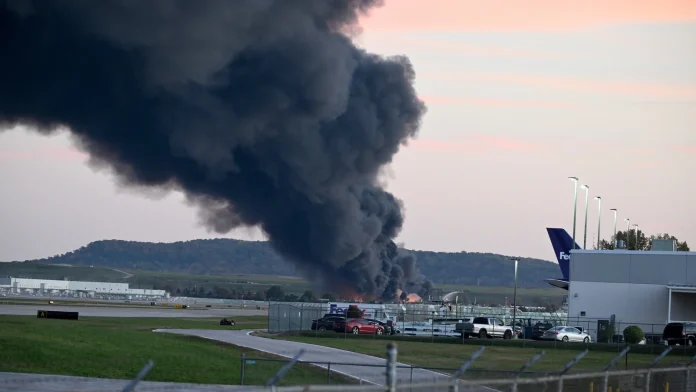
Night of Smoke and Silence: When a Cargo Flight Fell Back to Earth in Louisville
On a humid evening in Louisville, the skyline was cut by a column of black smoke that seemed to come from nowhere and everywhere at once.
The blaze began just after 5:15pm local time when a UPS MD-11 freighter — a long-serving three‑engine workhorse, fueled for an eight‑and‑a‑half hour run to Honolulu — departed Louisville Muhammad Ali International Airport and never climbed into the night. Video captured by residents and local media shows fire licking at one wing shortly after takeoff; moments later the aircraft descended sharply and erupted into flame as it hit an industrial strip adjacent to the airport.
By midnight the tally was grim: at least seven lives lost and 11 people hospitalized with injuries. Four of those killed were on the ground, Louisville Mayor Craig Greenberg confirmed at a late-night briefing, and Kentucky Governor Andy Beshear said officials expected the death toll to climb and that some survivors had suffered “very significant” injuries.
The scene on the ground
UPS Worldport, the sprawling air hub that anchors the city, was plunged into an uneasy, shocked silence. The facility is not only a piece of global logistics infrastructure; it is embedded in the fabric of Louisville. The company employs roughly 26,000 people in the region, and for many families in the city, UPS is not an abstract corporation but a neighbor, a first job, a source of steady overtime cash that pays for college tuition.
“This is a UPS town,” said Council member Betsy Ruhe, voice cracking with a blend of civic pride and dread. “My cousin’s a UPS pilot. My intern works the night shift to help pay for school. People are texting, calling — and not getting responses.”
Up and down the industrial corridor, firefighters battled spot fires, and the airport was shuttered through the night. Debris was strewn across two runways, and authorities issued a shelter‑in‑place order for locations within an 8km radius of the airport as a precaution.
What we know — and what investigators will look for
Federal investigators are on their way. The National Transportation Safety Board has dispatched a team; the NTSB typically takes 12 to 24 months to complete a formal investigation and issue recommendations. The Federal Aviation Administration also confirmed the crash of “UPS Flight 2976” shortly after its departure.
One striking image from amateur footage and overhead sensors: a piece of the aircraft appearing to separate before the airplane struck the ground. Flightradar24 telemetry shows the MD‑11 climbed to about 175 feet and reached a speed of roughly 184 knots before making a sudden, sharp descent.
“It’s too big a fire for a normal, typical-engine fire,” said John Cox, a U.S. air safety expert and former pilot. “That airplane should have flown on two engines. So now we’ve got to look at what caused it not to fly.”
Investigators will be piecing together many threads: engine performance, fuel load, maintenance records for a 34‑year‑old airframe that began service with UPS in 2006, ground witness accounts, and video. Boeing — which inherited the MD‑11 when it merged with McDonnell Douglas and later discontinued the type — said it would provide technical support to the probe and expressed concern for all affected.
People, community, and grief
On the streets near the airport, people stood in the glow of emergency lights, wrapped in blankets, watching the sky. A maintenance worker who asked not to be named said he had spent decades in the shadow of the Worldport dome. “You know the planes. You see them every night. You never think about one of them not coming back,” he said. “This is personal. We’re a family that works here.”
Another neighbor, Maria Lopez, who runs a small bakery a few blocks from the industrial park, described a surreal, apocalyptic night. “The first sirens were like a bad dream,” she said. “We closed early and saw the smoke. It smelled like rubber and oil. My son is a UPS driver. I called him a hundred times.”
Local hospitals treated the wounded through the night; city officials worked to coordinate shelter and family reunification. “There are people who will not get answered texts,” Council member Ruhe warned — a blunt admission of the human toll locked into compressed hours of commuting and overnight shifts.
Why this matters beyond Louisville
When a cargo jet crashes near a major logistics hub the ripple effects are not merely local. UPS Worldport is a linchpin of global supply chains. Delays at a single hub can cascade into missed connections, delayed parcels, and higher costs for companies and consumers around the world. UPS itself issued a service alert warning that scheduled delivery times for airborne and international packages “may be affected” and said contingency plans were being enacted to route freight as conditions permit.
On a broader level, the crash raises questions about aging aircraft in freighter fleets, the maintenance protocols for converted passenger-to-freighter planes, and the readiness of cities that host large industrial aviation operations. The MD‑11 is no stranger to scrutiny; its design and operational history have been discussed in aviation circles for decades. The fact that an MD‑11 in service for nearly two generations of workers could be lost so catastrophically will trigger hard questions about risk tolerance and oversight.
What happens next — a short checklist
- The NTSB will secure the wreckage, gather flight data recorders and cockpit voice recorders, and interview witnesses and first responders.
- UPS will coordinate with investigators, support the families of the crew and victims, and adjust routing for packages.
- Local authorities will continue to assess damage to structures, airfield infrastructure, and environmental hazards from jet fuel and fires.
- Community organizations will mobilize resources for displaced workers and trauma counseling; grief and recovery will be a months‑long process.
Questions to sit with
What does it mean for a city when the factories and hubs that provide livelihoods also carry risk? How do we balance the need for global connectivity with the safety of neighborhoods that live in the shadow of runways? And for families waiting for a text or a call — how do we rebuild confidence and provide comfort when information is slow and the truth is still being uncovered?
As investigators work to answer those questions, Louisville — a city that has long merged the grit of the blue‑collar Midwest with the warmth of Southern hospitality — is now gathering itself to mourn and to demand accountability. The MD‑11’s final descent has left charred earth and ruptured lives, but it has also revealed the delicate web of people behind every parcel, every overnight shipment, every midnight shift.
In the coming days, expect more details to emerge: official reports, crew manifests, maintenance logs. Expect an outpouring from a community that knows UPS not as a logo, but as a cluster of faces, families and routines. For now, neighbors share food, churches open rooms, and strangers stand under the same smoky sky, asking the same quiet question: how do we make sure this never happens again?
Wherever you are reading this — watching a package tracker update, or a newsfeed scroll past — pause for a moment. Think of the unseen linkages that bring goods across oceans and time zones, and of the people whose labor keeps the world running, sometimes through the darkest of nights.


